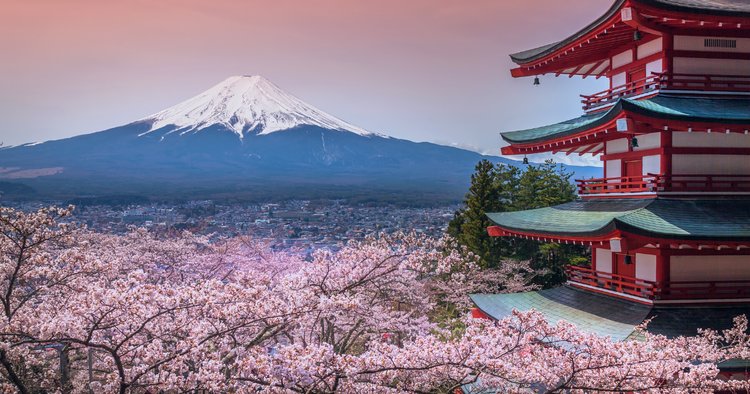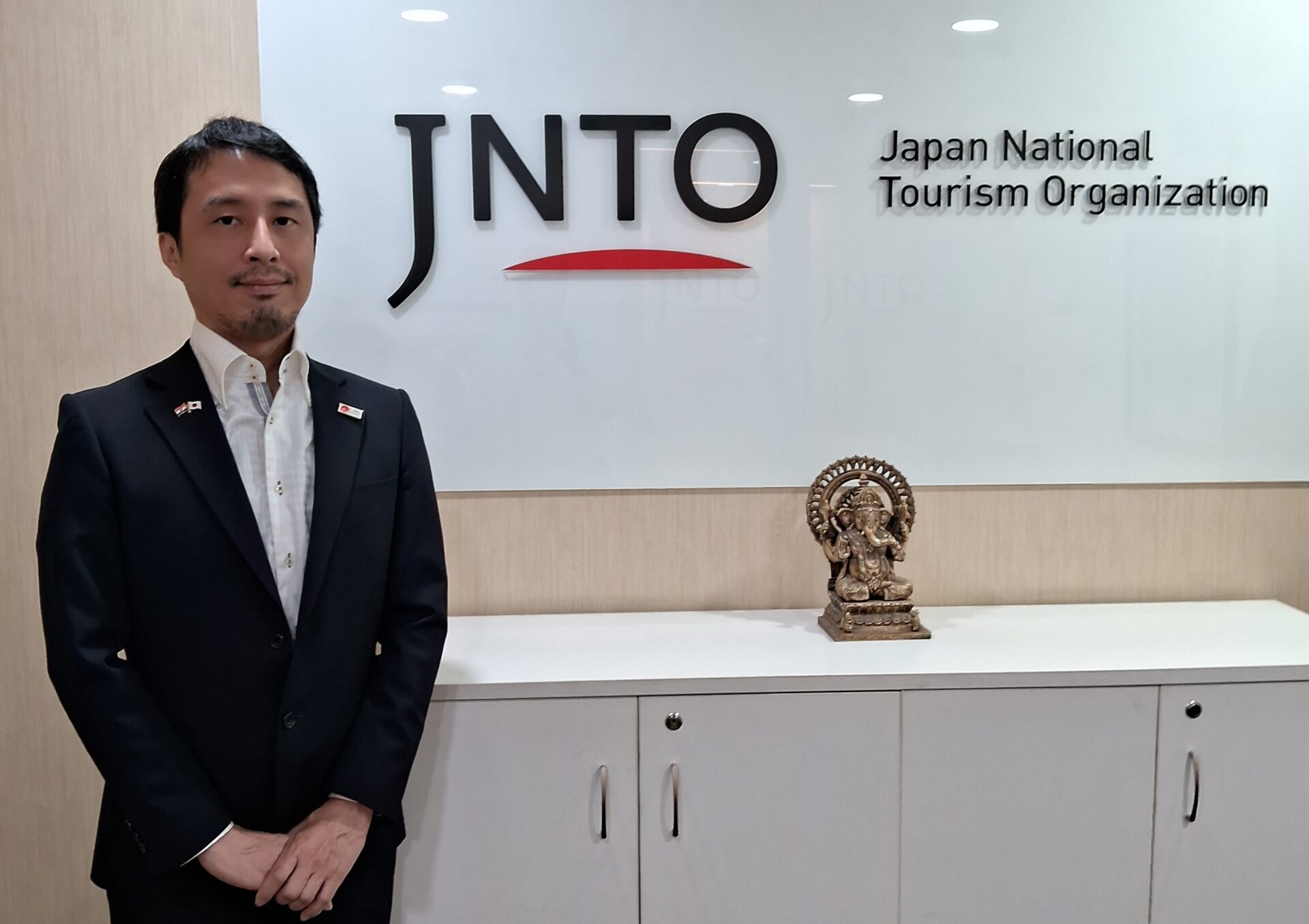Japan is keen to entice the Indian traveller with its varied landscape, geographical spread, food & beverage offerings, and natural wonders. Bunno Ryo, Executive Director, Japan National Tourism Organization (JNTO), Delhi Office, spoke to TravelBiz Monitor about their inbound numbers from India, potential source markets for 2024, and multi-faceted marketing strategies to reach the desired visitor target.
1. What are the India statistics for JNTO until September 2023 as compared to the target numbers listed for the year?
The Indian market holds immense potential and significance for Japan’s tourism industry. Over the past years, we have witnessed a growing interest from Indian travellers in exploring the unique cultural, historical, and natural wonders that Japan has to offer. In 2019, we saw over 1,75,000 Indian visitors. To meet the 2019 milestone is our objective for 2023. So far, from January to June 2023, we have witnessed close to 79,500 visitors to Japan from India.
As we continue to strengthen our ties with the Indian travel industry and tailor our initiatives to the preferences and needs of Indian tourists, we remain optimistic about the bright future of Japan’s tourism market in India.
2. As per the 2023-2025 tourism plan, Japan is looking to boost per-person spending to USD 1,500 (JPY 200,000) through aggressive marketing efforts, kindly elaborate on the strategies being planned or implemented?
We are delighted to announce that the Indian market has successfully reached the targeted spending amount of JPY 200,000. This achievement stands as compelling evidence that visiting Japan holds undeniable value for Indian consumers, known for their discerning emphasis on value for money. To further bolster our aim of achieving a per-person spending target of USD 1,500 (JPY 200,000), our current marketing strategies are strategically tailored to resonate with the discerning Indian travellers. This includes leveraging digital platforms for targeted advertising, collaborating with prominent Indian travel agencies, promoting exclusive cultural experiences, and introducing tailored travel packages that highlight Japan’s unique offerings. Additionally, we are exploring strategic collaborations with popular Indian influencers and implementing personalised promotional campaigns to enhance the overall tourist experience and encourage higher spending. To achieve the target of increasing per-person spending, we have adopted a multi-faceted approach that includes a mix of strategic marketing efforts including, but not limited to Online, Offline channels, SNS and various collaborations, etc.
Collaborating with travel agents and tour operators is an essential part of our strategy. We work closely with our partners to create enticing travel packages to encourage Indian tourists to explore Japan more extensively across segments like leisure and MICE.
The goal to increase per-person spending is not just about driving revenue but also about providing a richer and more fulfilling experience for our visitors. We remain committed to making Japan a compelling destination that offers exceptional value for Indian tourists.
3. The tourism plan also focuses on promoting destinations beyond Tokyo, kindly elaborate and what sets these destinations apart?
Japan is a country known for its remarkable combination of land size and geographical diversity. Japan’s land stretches 3000km from North to South, featuring a climate ranging from the cold zone to the subtropical zone. You can witness the enchanting cherry blossoms as early as January or February in Okinawa and as late as May in Hokkaido. Remarkably, approximately 70% of Japan covered by forestland, making it a remarkably green and environmentally conscious country. Moreover, Japan’s cultural diversity encompasses not only traditional Japanese culture but also the Ainu culture in Hokkaido and the Ryukyu culture in Okinawa.
Japan’s natural beauty extends far beyond Tokyo. The country is blessed with diverse landscapes, from the stunning cherry blossoms of Hirosaki Park in Aomori to the breathtaking landscapes of Hokkaido and the picturesque beaches of Okinawa. Promoting these destinations allows us to showcase the full spectrum of Japan’s natural wonders.
Additionally, the food culture in Japan is incredibly diverse, and travellers can savour regional dishes that are distinct to the area they visit. Whether it is the fresh seafood of Hokkaido, the street food of Osaka, or the kaiseki cuisine of Kyoto, regional food experiences are a significant draw for tourists.
Japan’s regions are filled with historical significance. For example, Hiroshima, with its Peace Memorial Park, is a place of historical reflection, while Nara boasts the stunning Todai-ji temple and the iconic Great Buddha. Travellers with an interest in history find these destinations incredibly compelling.
While Tokyo remains a popular destination, some travellers seek to escape the crowds and experience a more relaxed, authentic side of Japan. Destinations beyond Tokyo offer just that. Visitors can explore historic streets and beautiful landscapes without the hustle and bustle often associated with major cities.
Promoting destinations beyond Tokyo is not only about showcasing the beauty and uniqueness of these regions but also about ensuring that travellers have a more well-rounded and enriching experience during their visit to Japan. We are committed to highlighting the distinctiveness of each region, and our marketing strategies focus on telling the stories and offering compelling reasons to explore the less-visited gems.
4. What are Japan’s top-performing markets as of 2023 and the emerging potential markets for 2024?
As of 2023, Japan continues to welcome travellers from a host of countries. Some of the top-performing markets that have contributed significantly to our tourism industry include China, South Korea, Taiwan, Hong Kong, United States of America, Australia, Philippines, Malaysia, Vietnam, Singapore and UK.
Regarding emerging potential markets for 2024, we are actively exploring and investing in various regions that show promise in terms of tourism growth like India, Middle East, and Nordics among others. These markets hold significant potential, and it is essential for JNTO to continue our marketing efforts and foster strong partnerships to capitalize on this potential.
Our strategy for 2024 and beyond will include tailored marketing campaigns and initiatives to further tap into these emerging markets. We understand the importance of building strong relationships and we work very closely with travel partners, airlines, and local stakeholders to promote Japan as a preferred travel destination for these potential visitors.
5. Indian travellers today are looking for unique experiences, how does Japan fit in and cater to Indian travellers?
Japan has always been a treasure trove of unique and enriching experiences. We understand that Indian travellers today are looking for more than just the conventional tourist destinations; they seek immersive, authentic, and one-of-a-kind experiences and Japan caters to these requirements.
Japan is known for its rich and diverse culture. Indian travellers can participate in traditional tea ceremonies, witness mesmerizing geisha performances in Kyoto, explore ancient temples and shrines, and even stay in a ryokan (traditional inn) for an authentic cultural experience.
Japanese cuisine is renowned worldwide for its exquisite flavours and presentation. Indian travellers can savour regional dishes unique to different parts of Japan, from the famous sushi of Tokyo to the kaiseki cuisine of Kyoto. Japanese street food is also a hit among travellers looking for quick and delicious bites. And to bring Indians closer to home, Japan has over 2,100 Indian restaurants spread across the country serving authentic and delicious Indian delicacies.
Travellers can soak in hot springs or onsens in places like Hakone, enjoy the cherry blossoms in spring, and marvel at the vibrant autumn foliage. For fans of Japanese pop culture, Japan is a paradise. From visiting anime and manga cafes in Akihabara to experiencing themed cafes and visiting the bustling entertainment districts, there’s a lot to explore for enthusiasts. Adventurous Indian travellers can enjoy activities such as hiking in the Japanese Alps, skiing in Hokkaido, or scuba diving in Okinawa.
Japan is an incredible shopper’s paradise, offering something for every shopper, with Yodobashi Camera and BIC Camera catering to tech enthusiasts, while Don Quijote and DAISO – 100 YEN cater to budget-conscious consumers. The iconic Uniqlo and upscale shopping in Ginza, Tokyo, further enrich the diverse shopping experience, making Japan a shopaholic’s dream.
Japan is known for its safety and the warm hospitality of its people. Indian travellers can explore the country with a sense of security and be welcomed with open arms. We understand the evolving preferences of Indian travellers and continue to adapt our offerings to meet their desires for authenticity and uniqueness.





